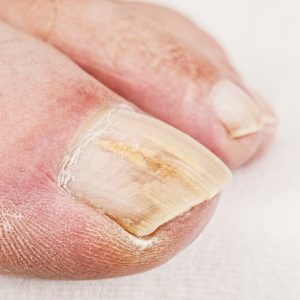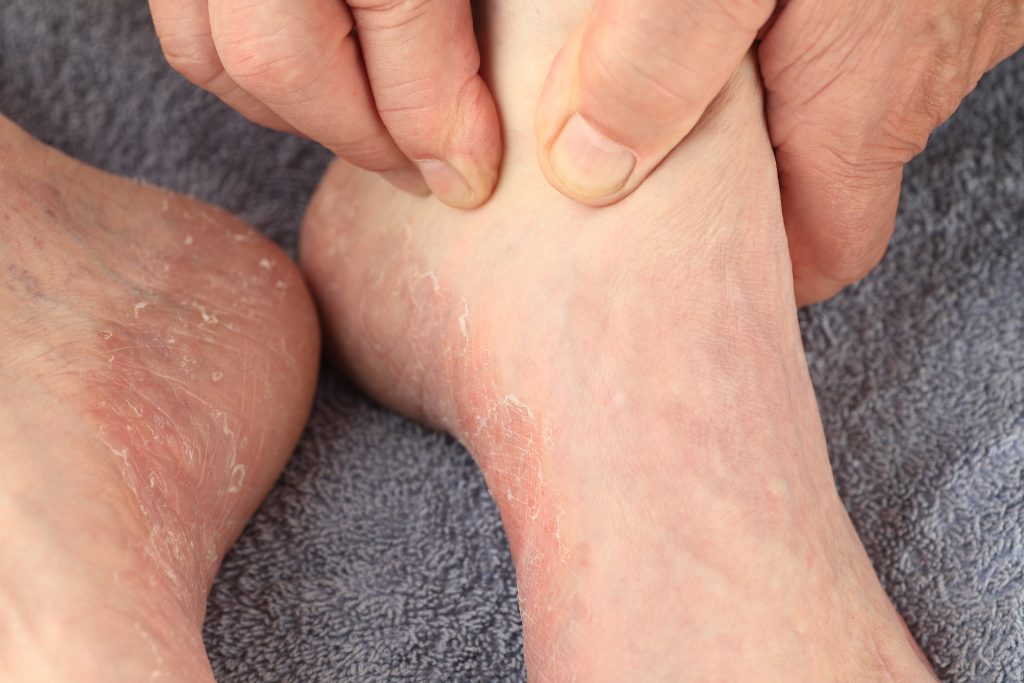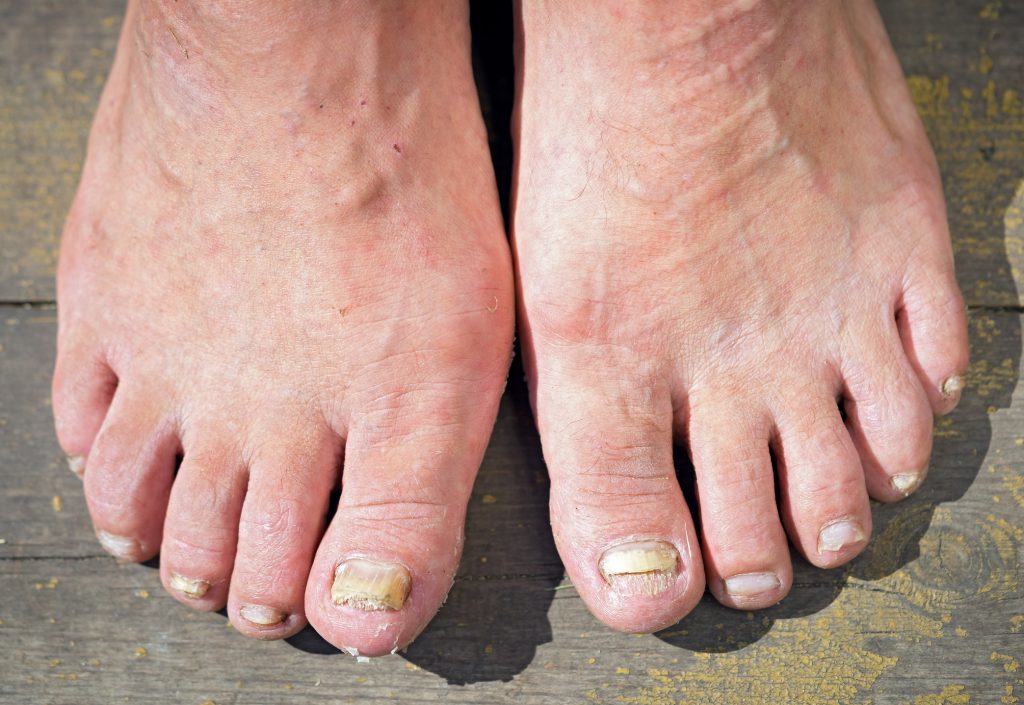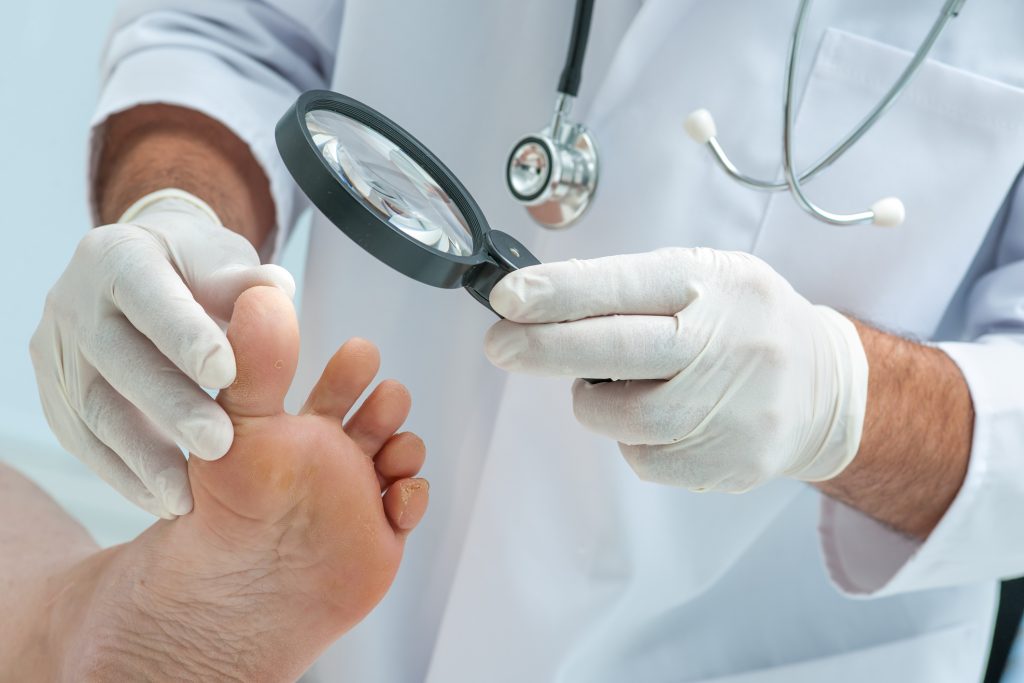Fungal Infection Treatments from U.S. Dermatology Partners
What Is a Fungal Infection?
A fungal infection is an inflammatory condition that is caused by fungus. Fungal infections can appear in many parts of the body and include athlete’s foot, yeast infections, skin and nail infections and more.
Related: 5 Common Foot Rashes

Toenail fungus can infect the toenails.
Find This Service Near You
Fungal Infection Symptoms
Symptoms of a fungal infection depend on the area affected.
A fungal infection of the toenails or fingernails is typically characterized by:
- Nail discoloration (white, yellow, brown or green)
- Thickening of the nail (or thinning)
- Nail “lifts up” from the finger or toe and crumbles
The infection could affect one nail or part of a nail, or it could affect multiple nails. If left untreated, fungal infections can lead to permanent nail damage. Not all thick, brittle nails are the result of a fungal infection. Your doctor can help you determine if there is a fungal infection present.

Athlete’s foot can affect one or both feet.
Athlete’s foot affects the skin on the feet and is characterized by:
- Raw, cracked or peeling skin on the feet
- Dry skin on the soles or sides of the feet
- Thick, discolored, crumbled toenails
Who Is at Risk for Fungal Infection?

Toenails and feet are the most vulnerable to fungal infection because they are in socks and shoes, both of which trap moisture that promote fungus growth. Walking barefoot in a warm, moist place like a swimming pool or gym locker room where someone else with a fungus has also walked barefoot puts you at risk.
Fingernails that are wet for hours at a time are also susceptible to fungus and a fungal infection on your feet can spread to your fingernails.
People with diabetes or weakened immune systems that acquire a fungal nail infection have an increased risk of developing sores that won’t heal and should seek treatment immediately.
Fungal Infection Treatments
Fungal infections are difficult to treat and recurrence is common.
The most common approach to fungal infection treatment is antifungal drugs. These may be applied directly to a fungal infection or, to treat more serious infections, antifungal drugs may be taken by mouth or as an injection.
Many topical anti-fungal medications applied directly to the nail are ineffective because they cannot penetrate the hard nail in sufficient concentration to kill the fungi. If the fungal infection has already reached the nail bed (where the nail starts growing), oral medications may be prescribed. These medications reach the nail bed through the bloodstream.
If the nail is badly damaged, it may have to be removed.
Athlete’s foot can be successfully treated in its early stages with many over-the-counter medications. If left untreated, a prescription drug may be required. These can include topical steroid creams, oral antifungal medications or oral antibiotics.
Fungal Infection Prevention

If you use public locker rooms, showers, or pools, do not walk barefoot through them, and avoid sharing towels in the locker room. If someone in your home has a fungal infection, do not share towels, combs or other personal items with them.
Other recommendations to prevent fungal infection:
- Keep your skin dry – especially between the toes.
- Wear socks made of cotton or wool that allow your feet to “breathe.”
- Wear shower shoes in damp places like swimming pool bathrooms and locker rooms.
- Keep nails trimmed and clean.
- Wear well-ventilated shoes.
- Change your socks regularly, especially after exercise.
- Wear rubber gloves when washing dishes or overexposing hands to moisture.
- Sterilize any instruments you use on nails before and after every use.
- Wash your hands after touching an infected nail.
*Results may vary by individual

